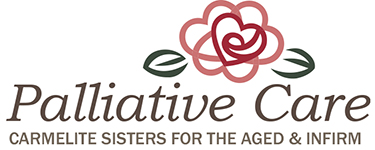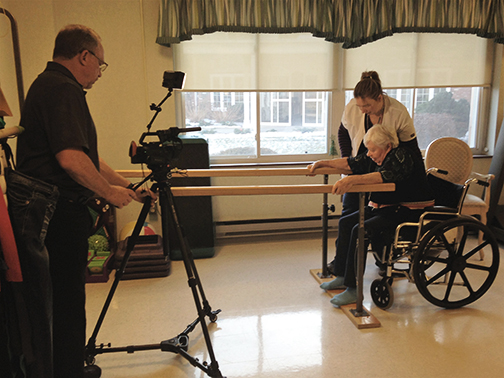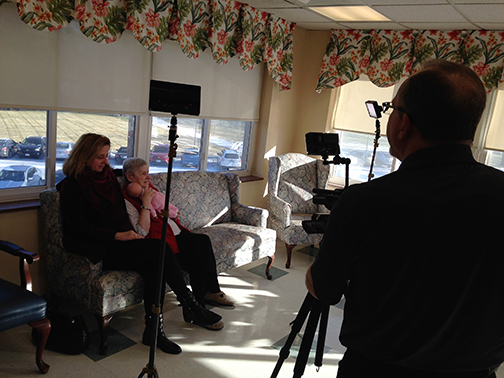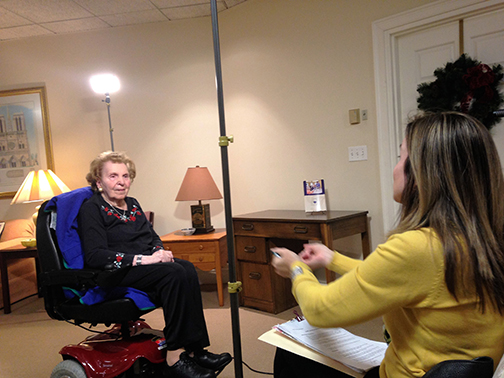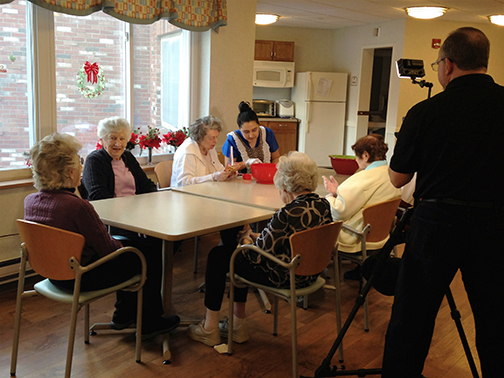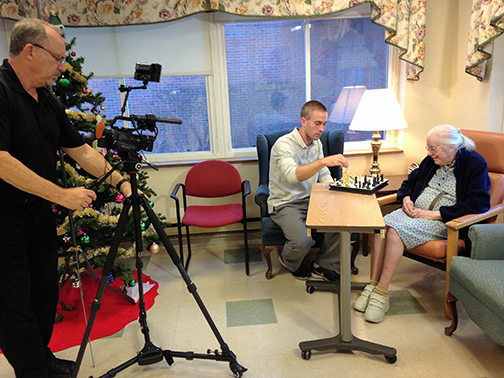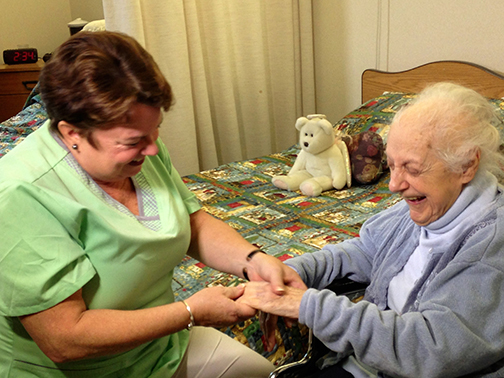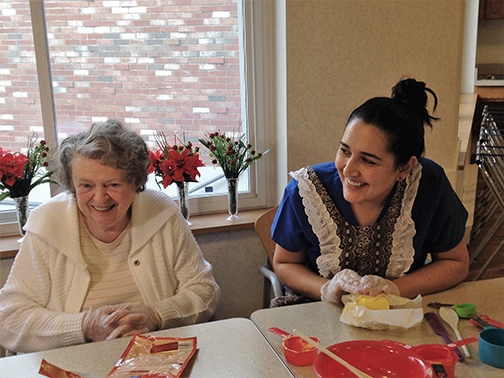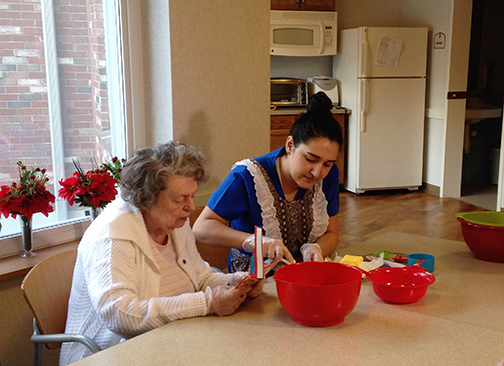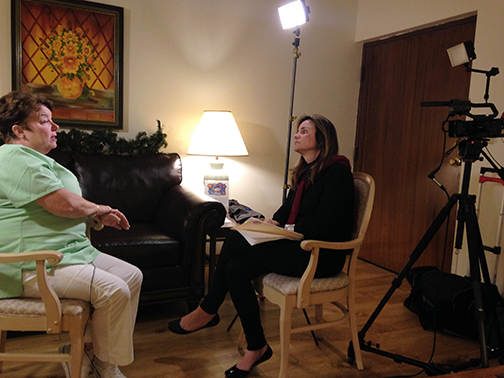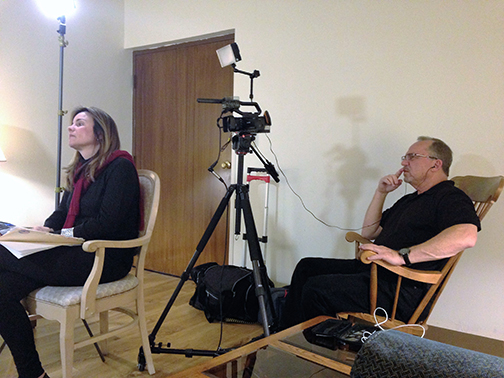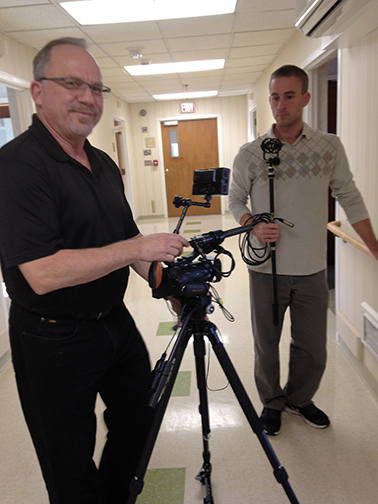On December 13, 2016, five people loaded up a car in the freezing December weather and trekked from New York to Framingham, MA, to encounter and document the groundbreaking Carmelite Palliative Care Program at St. Patrick’s Manor. Since 2012, this unique Program has been changing the lives of residents, families, and staff, and the crew members were eager to hear about their experiences. The time has come to expand and publicize this new and much-needed approach to palliative care, which you can read about in more detail here.
Linda Corley, producer of the 2014 Reality Docu-Series The Sisterhood: Becoming Nuns, which followed five young women as they considered entering the Carmelite Sisters community, came from Florida to produce the video with cameraman Joel Kaplan. She and Joel each bring over 30 years of experience as documentarians with established giants such as PBS and National Geographic. Stacey Sumereau, who was one of the five young women featured on The Sisterhood and now works for the Avila Institute, co-produced the video with Linda. Her husband, John Sumereau, served as grip for the project, and Sr. Peter Lillian, director of the Avila Institute of Gerontology, served as advisor and overseer of the process.
In three intense days of filming, the five crew members conducted interviews with four family members, three residents, three staff members, and two Sisters. In addition to hearing their spoken testimonies about how the Palliative Care Program has changed their lives and the lives of their loved ones, the challenge for the camera crew was to bring those testimonies to light visually. One family member raved about the staff member who brought her 103-year-old mother a new pink sweater because “she thought it would look pretty on her.” Working in a visual medium, the crew needed to capture footage of that staff member helping the mother into the pink sweater.
In a project like this, much of the planning had to happen on the spot. The schedule of interviews was established beforehand, but beyond that, the crew had to act out what the interviewees discussed. Karla Diaz, one of the CNA’s, said she enjoyed caring for the residents as she would for her mother or father who live far away. That comment necessitated filming her interacting with her residents — filing one’s nails and wiping away another’s tears. Cindy Dion mentioned specific things the staff does, such as baking on the floors to produce a homelike atmosphere, so the crew made sure to drop in on an afternoon baking club. Although capturing those touching moments may sound simple, it took a lot more time than you might expect. Ensuring the lighting was adequate, removing distracting objects from the background, obtaining resident permissions to be filmed, and ensuring that the surrounding area remained quiet was an involved process. Working within everyone’s time constraints was sometimes difficult too; it led to twelve-hour days, filming Sr. Peter’s and Sr. Maureen’s interviews until 9 p.m. At times, it felt like a race against the clock.
Emotional, mental, and psychiatric pain are all internal and are therefore are difficult to show on camera. Linda and Joel came up with creative, visually interesting ways to show that the residents at St. Patrick’s are thriving. They filmed residents reminiscing over pictures from their past or doing physical therapy, and the crew paced up and down the hallways of the extensive nursing home garnering shots of Sisters hugging and kissing the residents, staff making cookies and holding hands with residents, and many other moments of authentic human connection that helped highlight the hallmarks of palliative care on film. Joel and Linda edited the videos post-filming once home in Florida and produced seven testimonies, a three-minute overview, and a thirteen-minute video within three months.
The sense of family that pervaded every floor was palpable. As Karla Diaz, who has worked at St. Patrick’s for three years, said, “It makes me feel good inside, because I know that I am doing something for someone who really needs it. There are some residents who have a lot of family to come visit them, but there are some people who don’t have any. And you have to be there for them more.” After capturing beautiful stories that will help launch the program into the public eye, the videos are the main feature of this website. This website is intended for residents, staff and families to learn about palliative care.
